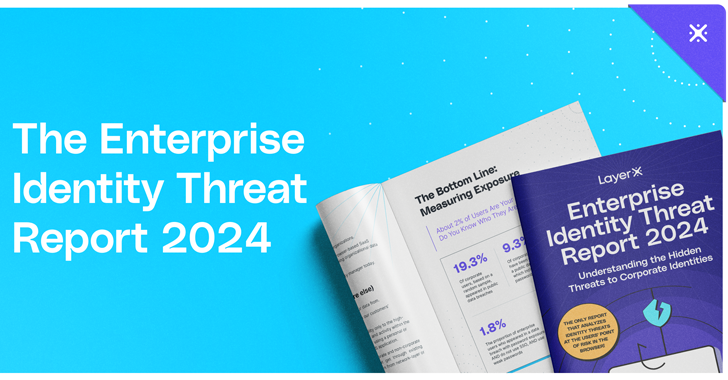Unveiling Hidden Threats to Corporate Identities
- November 4, 2024
- Posted by: claudia
- Categories:

In the contemporary browser-centric workplace, corporate identity has emerged as a crucial line of defense against cybersecurity threats, often referred to as “the new perimeter.” A recent report, the “Enterprise Identity Threat Report 2024,” highlights significant vulnerabilities organizations face due to a lack of awareness regarding how corporate identities are utilized across various platforms. This oversight makes enterprises susceptible to data breaches, account takeovers, and credential theft.
The report, based on data from LayerX’s Browser Security platform, reveals that a mere 2% of users within an organization account for the majority of identity-related risks. These individuals frequently appear in multiple public data breaches, often using weak or compromised credentials and bypassing single sign-on (SSO) mechanisms. The report notes that identities with exposed passwords appear in an average of 9.5 breaches, significantly elevating their risk profile. This data suggests that cybersecurity efforts should focus on monitoring and managing these high-risk users to effectively mitigate potential threats.
Another alarming finding is the prevalence of shadow identities, where a staggering 67.5% of corporate logins occur without the protective measures of SSO. Additionally, 42.5% of logins to Software as a Service (SaaS) applications are made through personal accounts outside corporate security oversight. This gap in credential management leaves organizations blind to where corporate access is happening, undermining security teams’ ability to detect and respond to identity-related threats.
The report also challenges the perception that corporate passwords are inherently more secure than personal ones. Despite established password governance policies, it reveals that 54% of corporate passwords are classified as medium-strength or weaker, comparable to the 58% for personal passwords. These inadequacies indicate a broader issue, as even compliant passwords may be cracked within half an hour using modern hacking tools, highlighting the need for organizations to reassess their password management strategies.
Among the overlooked risks is the use of browser extensions, which often operate unnoticed but have significant cybersecurity implications. The report finds that 66.6% of installed browser extensions request high or critical-risk permissions, with more than 40% of users having such extensions. The permissions granted to these extensions can enable access to sensitive data, including cookies and session tokens, which can be exploited to compromise corporate credentials or facilitate session hijacking.
Furthermore, the research underscores how attackers are successfully evading legacy security measures, such as Secure Web Gateways (SWGs), through increasingly sophisticated methods. Notably, nearly 50% of malicious web pages bypass existing protections by being hosted on legitimate public services, taking advantage of trust in well-known domains. Additionally, 70% of these malicious pages utilize phishing kits that differ minimally from established phishing templates, enabling them to evade standard detection systems.
The findings of the “Enterprise Identity Threat Report 2024” highlight the urgent need for organizations to revamp their identity security approaches. Reliance on traditional security models, such as network-layer protections and basic password governance, has proven inadequate for the complexities of modern browser-based environments. As remote access becomes the norm, security teams must adopt a proactive stance, acknowledging gaps in their coverage and adapting strategies to address the evolving landscape of cyber threats.
In summary, this report prompts critical introspection within organizations about their identity security protocols, emphasizing the necessity for enhanced awareness, improved risk management of high-risk users, rigorous password policies, cautious use of browser extensions, and the adoption of more sophisticated security measures to counterattack the tactics employed by modern cyber attackers. Organizations that adapt to these emerging threats will be better positioned to safeguard their digital assets in an increasingly vulnerable cyber environment.
